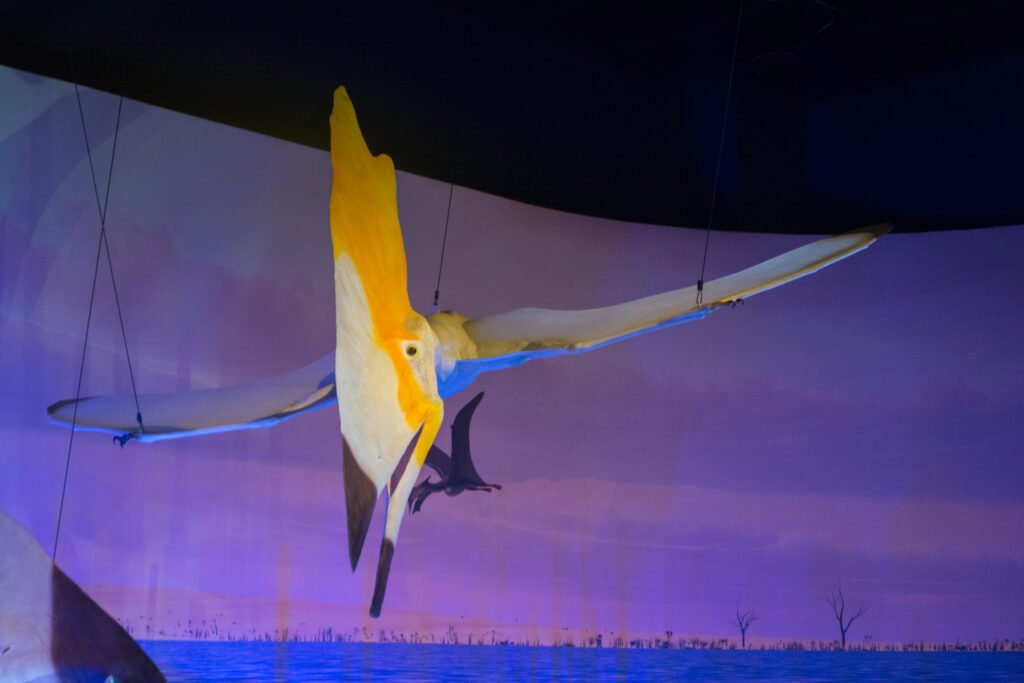Have you ever imagined a world where dinosaurs roamed the skies, like majestic rulers of the air? It’s a fascinating thought, isn’t it? While we often think of dinosaurs as giant, earthbound creatures, the truth is much more thrilling. Flight didn’t just evolve once in the dinosaur lineage; it happened multiple times. This captivating journey into the evolution of flight in dinosaurs is a tale of adaptation, survival, and the relentless pursuit of the skies. Let’s dive deep into the prehistoric skies and explore how some of the most incredible creatures on Earth took to the air.
The Birth of Flight: A Surprising Twist

When we think of flight, our minds often drift to birds, the modern-day masters of the skies. However, the roots of flight stretch back to the age of dinosaurs. It’s surprising to learn that flight evolved more than once among these ancient giants. Some dinosaurs, like the famous Archaeopteryx, are often cited as the first to take to the skies. However, this wasn’t the only instance. Different groups of dinosaurs, separated by time and evolutionary paths, developed the ability to fly. This divergence in evolution reveals a fascinating aspect of nature’s ingenuity.
Feathers: The Key to the Sky

Feathers are not just for show; they played a crucial role in the evolution of flight. Initially, feathers may have evolved for insulation or display, but over time, they became essential for flight. The structure of feathers allowed for lift, maneuverability, and speed, enabling some dinosaurs to take to the skies. Imagine a world where feathers were the ticket to the heavens, transforming terrestrial creatures into aerial wonders. This adaptation showcases the remarkable versatility of feathers and their pivotal role in the evolution of flight.
Early Flyers: The Pioneers of the Air

The first dinosaurs to experiment with flight were not the mighty giants we often envision. Instead, they were smaller, more agile creatures. These early flyers, like the Microraptor, had unique adaptations that allowed them to glide and eventually achieve powered flight. The Microraptor, with its four wings, is a testament to the diverse and innovative ways dinosaurs approached flight. These pioneers of the air paved the way for future generations to refine and perfect the art of flying.
Convergent Evolution: Nature’s Repetition

Convergent evolution is a phenomenon where different species develop similar traits independently. In the case of flight, this means that various dinosaur lineages evolved the ability to fly separately. This repetition underscores the evolutionary advantages of flight, such as escaping predators, finding food, and exploring new habitats. Nature’s ability to repeat successful adaptations is a testament to its resilience and creativity. It also highlights the immense pressure on species to adapt and survive in changing environments.
The Role of Environment in Flight Evolution

The environment played a significant role in the evolution of flight. Dinosaurs that lived in forested areas, with dense vegetation and limited ground space, found flight to be a valuable adaptation. It allowed them to navigate the treetops, escape predators, and access resources unavailable to non-flying creatures. The interaction between these dinosaurs and their environment drove the evolution of flight, showcasing the dynamic relationship between organisms and their habitats. This relationship is a powerful reminder of how life on Earth continuously adapts to its surroundings.
From Gliding to Powered Flight

The transition from gliding to powered flight was a monumental leap in the evolution of flight. Initially, many dinosaurs could only glide short distances, using their wings to control their descent. Over time, some evolved the necessary musculature and wing structure to achieve sustained, powered flight. This transition marked a significant shift in the capabilities of flying dinosaurs, allowing them to explore new ecological niches and dominate the skies. The journey from gliding to powered flight is a testament to the relentless drive of evolution.
The Rise of Pterosaurs: A Different Path

While birds and some dinosaurs shared a common ancestor, pterosaurs took a different evolutionary path to achieve flight. These flying reptiles were the first vertebrates to take to the skies, predating birds by millions of years. Pterosaurs had unique adaptations, such as elongated fingers and membranous wings, that allowed them to soar through the air. Their evolution highlights the diversity of flight adaptations and the multiple paths nature can take to achieve similar outcomes. The rise of pterosaurs is a reminder of the vast potential for innovation in the natural world.
The Evolutionary Arms Race

The evolution of flight in dinosaurs was not just about adaptation; it was an arms race. As some dinosaurs took to the skies, others evolved new strategies to counter them. Predators developed better hunting techniques, while prey species adapted to evade aerial threats. This constant push and pull drove the evolution of flight to new heights, resulting in a diverse array of flying dinosaurs. The evolutionary arms race illustrates the dynamic and ever-changing nature of life on Earth.
Lessons from the Past: What Dinosaurs Teach Us

The evolution of flight in dinosaurs offers valuable lessons for us today. It highlights the power of adaptation and the importance of resilience in the face of change. As we face our own environmental challenges, the story of dinosaurs taking to the skies serves as a reminder of nature’s ability to innovate and survive. By studying the past, we can gain insights into the future and better understand the complexities of life on our planet. The tale of dinosaurs and flight is not just a story of the past; it’s a lesson for the present and future.
Reflecting on the Legacy of Flying Dinosaurs

The legacy of flying dinosaurs is a testament to the wonders of evolution. From the first tentative glides to the mastery of powered flight, these creatures transformed the skies. Their story is a reminder of the endless possibilities of life and the incredible adaptations that have shaped our world. As we look to the skies today, we can see the echoes of these ancient pioneers in the birds that grace our skies. The legacy of flying dinosaurs is a celebration of life’s resilience and the boundless potential of evolution. What marvels will nature unveil next?



